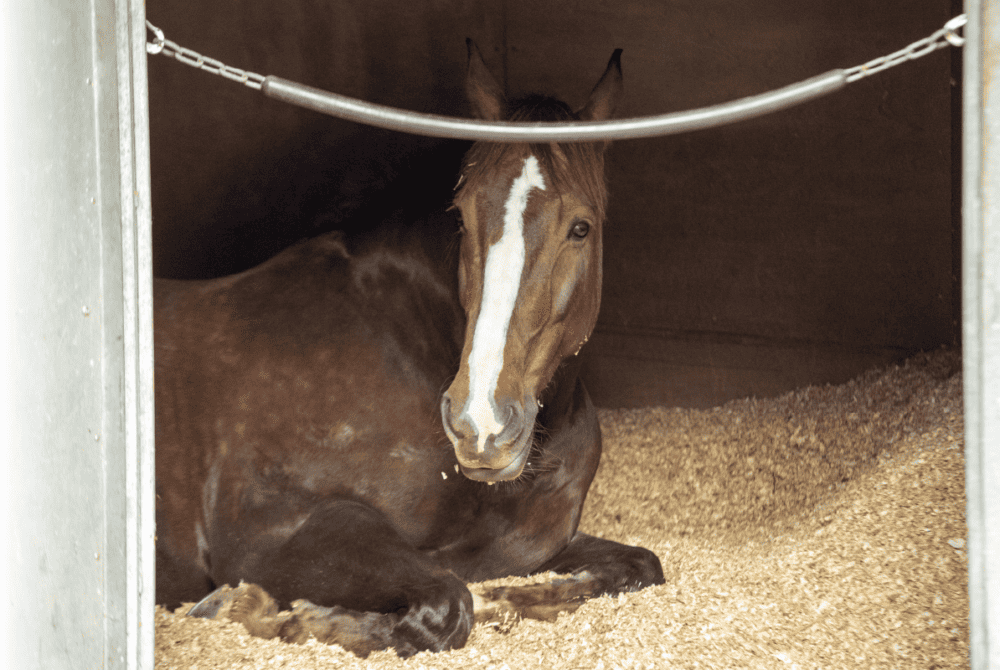Gut reaction
Posted 13th March 2024
Spotting the signs of colic and acting immediately are vital for successful recovery, says vet Hayley Chidlow

Colic is one of the most common conditions affecting horses and it can be life-threatening. In simple terms, colic means abdominal pain and is usually caused by problems within the gastrointestinal tract. It’s always a medical emergency, so if you suspect your horse may be suffering from colic, call your vet immediately.
Colic causes
There are many causes of colic, most of which can be treated with medication and fluid therapy. However, approximately 5–10% of colics will require surgery to correct the problem.
Common medical colics include…
- Spasmodic colic is the most usual type and it occurs when the intestines cramp or spasm. It normally responds rapidly to treatment with medication to relieve pain and relax the intestine.
- Impaction colic occurs when there are intestinal blockages and is commonly seen in horses who have had recent changes in routine. Very hot or cold temperatures – when horses may not drink enough – are also a risk factor. Most cases of impaction colic respond to medical treatment with pain relief, laxatives and fluid therapy, but occasionally surgery is required to resolve very large or severe impactions.
- Large colon displacement happens when the large intestine moves to an abnormal position in the abdomen, resulting in a painful build-up of gas. Displacements can often be treated medically, but referral to an equine hospital for more intensive care and intravenous fluid therapy is sometimes needed. However, if the colon fails to move back to its normal position, surgery might be required.
Common surgical colics include…
- Strangulating colic occurs when the blood supply to part of the intestine is compromised, resulting in severe pain and rapid damage to or death of the intestine. Causes of this type of colic include torsions (twists of the gut), entrapment of the gut between other structures in the abdomen, and lipomas (fatty lumps) that wrap around the intestine and cut off the blood supply.
- Non-strangulating obstructions includes displacements or impactions that have not been resolved with medical treatment, or masses, such as tumours or foreign bodies, that obstruct the intestine.
Did you know?
In spring and summer, sudden flushes of grass or altered turnout routine may increase the risk of gas colic or large colon displacements.
Top tip
Monitor worm burden using a faecal egg count and targeted worming programme as prescribed, as a heavy parasite burden can result in blockages or inflammation of the intestine.
Learn more about how to spot the signs of colic and how the condition is treated in April Horse&Rider – out now.











